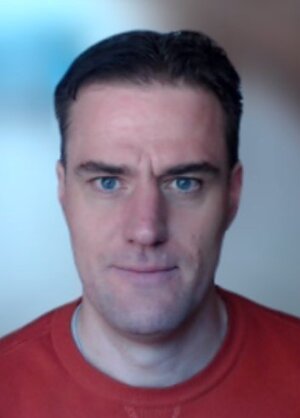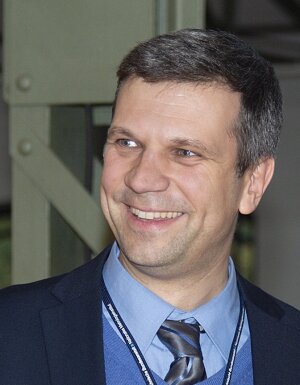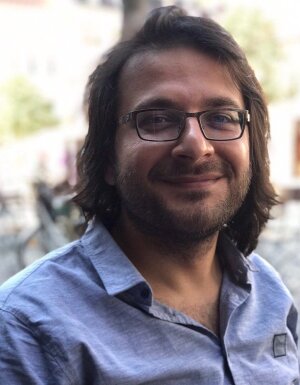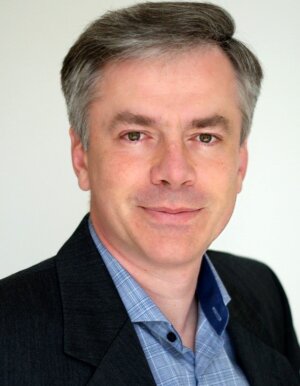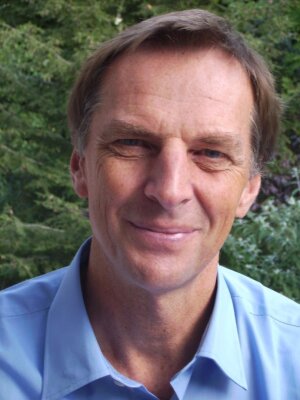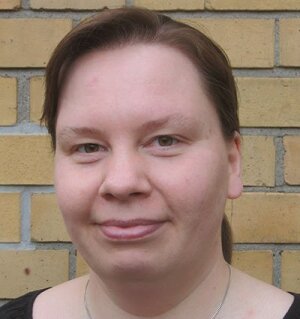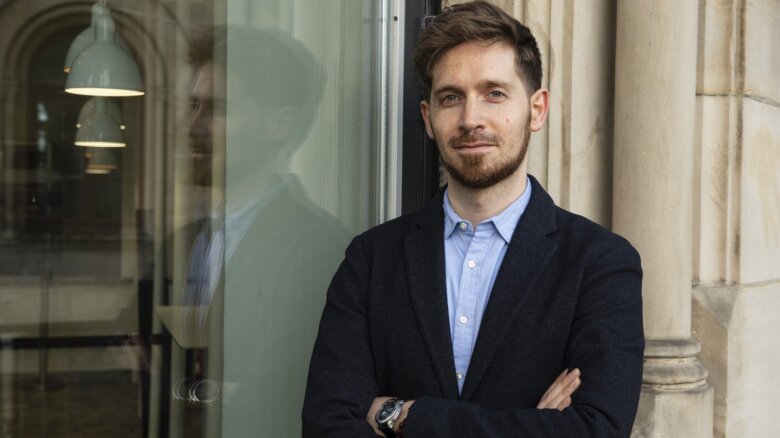- Light
Meldung vom:
Das Physikalische Kolloquium findet, wenn nicht anders angegeben, jeweils um 16:15 Uhr im Hörsaal 2 Abbeanum, Fröbelstieg 1 statt. Zusätzlich gibt es einen live streamExterner Link.
-
21.10.2022 um 16:00 Uhr im HS 1, Max-Wien-Platz 1
Verleihung der Ehrendoktorwürde an Prof. Dr. Abhay Ashtekar
Physikalisches Geburtstagskolloquium zu Ehren von Herrn Prof. Dr. Bernd Brügmann
Nach einer Einleitung und Grußworten des Dekans, Prof. Dr. Christian Spielmann folgt der Festvortrag:
Prof. Dr. Abhay Ashtekar
The Pennsylvania State University (USA)The Enigma of Black Hole Horizons
Gravitational wave observations have established that black holes are ubiquitous
in our universe. But what exactly is a black hole? What exactly is it that forms as
a result of a gravitational collapse and evaporates due to quantum radiation? The
common answer is of course „event horizons“. But they are teleological and have
unphysical properties. An event horizon may be contained in the room you are
sitting in – and growing – in anticipation of a gravitational collapse that may take
place a billion years from now. Similarly, much of the confusion about the
„information loss issue“ stems from over-reliance on event horizons. Is there a
better notion of black hole horizons? We will see that the answer is in the
affirmative and leads to new and interesting insights. For example, they have
opened up the possibility of gravitational wave tomography: although horizons are
invisible to outside observers, one can reconstruct an image of their dynamics
using gravitational waveforms at infinity.
This account of the fascinating and vexing properties of black hole horizons will
be presented at a level that is accessible to non-experts. -
14.11.2022
Prof. Fabian Pauly
Foto: F. PaulyGastgeber: Prof. Dr. Marek Sierka
Photocarrier thermalization in 2D materials & charge and heat transport through nanocontacts
Prof. Dr. Fabian Pauly
Institut für Physik, Theoretische Physik I
Universität AugsburgThis presentation is split into two parts. In the first one, I will speak about the dynamics of photoexcited charge carriers in two-dimensional (2D) materials. The second is devoted to charge and heat transport through nanostructures, in particular through single-atom and single-molecule contacts.
- Utilizing high-energy carriers in photovoltaic devices could improve light-to-energy conversion efficiencies. To achieve this goal, hot-electron transfer between active and passive layers should be facilitated or photocarrier lifetimes extended. Van der Waals (vdW) semiconductor heterostructures formed from atomically thin 2D crystals might represent a suitable platform to take advantage of both phenomena. I will describe our parameter-free ab initio modeling of photocarrier thermalization due to electron-phonon interactions. Based on it, I will study the photocarrier thermalization bottleneck in graphene and h-BN/graphene, the impact of spin-orbit splitting on the thermalization behavior in transition metal dichalcogenides and the internal quantum efficiency of corresponding van der Waals heterostructures, as well as the differences in charge carrier thermalization in bulk and monolayer CdTe.
- Single-atom and single-molecule junctions turn out to be ideal platforms for testing quantum theories that describe charge and energy transport in novel nanoscale devices. While the electrical conductance of single-molecule junctions can be measured routinely for some years now, the thermal conductance of single-molecule junctions has not been determined directly until recently, owing to the challenge of detecting minute heat currents at the picowatt level. In this part, I will discuss our present understanding of charge and heat transport at the atomic and molecular scale. For charge transport I will study mechanosensitive single-molecule contacts , for heat transport I will show pioneering experiments combined with the theoretical modelling performed in my group.
-
21.11.2022
Prof. Dr. Andrey Surzhykov, PTB und TU Braunschweig
Foto: privatEhrenkolloquium anlässlich des 60. Geburtstages von Prof. Dr. Stephan Fritzsche
Prof. Dr. Andrey Surzhykov
PTB and TU BraunschweigVortex light as a new instrument for atomic physics studies
Vortex light beams, that possess a helical phase front and carry nonzero projection of the orbital angular momentum (OAM) on their propagation direction, attract currently much attention in many areas of modern physics. They are considered, for example, as a valuable tool in high-resolution microscopy, classical and quantum information transfer as well as for manipulation of microparticles and even Bose–Einstein condensates. During the recent years, moreover, a particular emphasis was also placed on the interaction of vortex light modes with single trapped atoms or ions. In my talk, I will give an overview of experimental and theoretical atomic physics studies with vortex light. In particular, we will consider how the coupling of OAM modes with atomic systems can modify both the (conventional) selection rules and the relative strength of multipole transitions. Moreover, the operation of strongly forbidden atomic transitions by OAM photons will be also discussed in detail. Some of these transitions are discussed as candidates for novel frequency standards, and, thus, the use of twisted light may help in development of new generation of atomic clocks.
This colloquium talk is dedicated to the celebration of the 60th birthday of Professor Stephan Fritzsche.
-
28.11.2022
Dr. Sina Saravi
Foto: privatGastgeber/Verantwortlicher: Prof. Dr. Thomas Pertsch
Habilitationsvorstellung
Dr. Sina Saravi
Institut für Angewandte PhysikNanoscale nonlinear quantum photonics
Nonlinear nanostructured and nanoscale photonic systems offer new opportunities for optical quantum technologies. Aside from the obvious advantage of miniaturization, they also offer new capabilities in engineering the properties of the quantum states generated through nonlinear interactions, such as photon pairs and squeezed light. More generally, in such nanoscale systems, one gains access to new degrees of freedom in tailoring nonlinear quantum optical interactions. This could be done through strong control over modal dispersion and optical density of states, having access to near-field interactions and evanescent modes, and possibility of having new types of phase-matching conditions or lack of them. At the same time, commonly in such nanoscale photonic systems, there is an unavoidable presence of loss, either through material absorption or scattering, or inherent leakage mechanisms. When the loss or decay mechanisms are directly combined into the nonlinear quantum process, it can create different behaviors compared to when the nonlinear interaction is separated from the loss mechanism, creating new challenges and at the same time new opportunities.
In this talk we review the state of nonlinear quantum photonics in nanostructured and nanoscale systems, with a focus on engineered generation of quantum light. We then focus on how to describe nonlinear quantum optical interactions in nanoscale photonic systems in the presence of loss, leakage, evanescent fields, and in non-paraxial regimes, and how such effects and regimes of operation can be utilized for novel applications in optical quantum technologies, such as quantum spectroscopy, quantum imaging, entangled photon-pair generation, and creating hybrid systems.
-
05.12.2022
Dr. Sergiy Krasnokutskiy
Foto: privatGastgeberin/Verantwortliche: PD Dr. Cormelia Jäger
Habilitationsvorstellung
Dr. Sergiy Krasnokutskiy
Institut für Festkörperphysik, AG LaborastrophysikRole of Low-Temperature Chemistry of Carbon in our Astrochemical History
The chemistry that takes place between stars determines the molecular composition of the solids from which all solid objects in new planetary systems are formed. A large fraction of this material survives during the star formation process maintaining its chemical composition. It is expected to be delivered to planets at their earlier stages.
Laboratory studies of the formation of carbonaceous solids under conditions similar to those of the interstellar medium have proved their predominantly organic nature. Therefore, the massive delivery of such organics to Earth and exoplanets should have a significant impact on the chemistry occurring on their surfaces and may also trigger the emergence of life. Recent discoveries of the presence of peptides in meteorites and the way how these molecules may be formed in the interstellar medium give strong support to the hypothesis of molecular panspermia. -
12.12.2022
Prof. Christoph Wetterich
Foto: https://www.thphys.uni-heidelberg.de/~wetterich/Gastgeber: Prof. Dr. Holger Gies
Quantum gravitiy predictions for particle physics and cosmology
Prof. Dr. Christoph Wetterich
University of HeidelbergContrary to general belief, quantum gravity can have important consequences for present day experiments and cosmological observations. It can predict some couplings of the standard model of particle physics. Quantum fluctuations of the metric determine the quartic self-interaction of the Higgs-scalar at an energy scale close to the Planck mass. Extrapolating the running couplings to the electroweak scale, the mass of the Higgs boson has been predicted in the range found later by experiment. The scaling solution of quantum gravity for scalar potentials in cosmology is found to have a form that predicts both a very early inflationary epoch and late dynamical dark energy. The beginning of the Universe is a scale invariant state that may be called „great emptiness“.
Functional renormalisation permits the computation of fluctuation effects of the metric. Quantum gravity can be formulated as a non-perturbatively renormalisable quantum field theory, in close analogy to the other fundamental interactions. The quantum scale symmetry associated to the ultraviolet fixed point has far reaching implications for particle physics and cosmology.
-
16.01.2023 im HS 1, Max-Wien-Platz
Gastgeber/Verantwortlicher: Jun.-Prof. Dr. Christian Franke
Dr. Gunda Huskobla
Graduate Academy of Friedrich Schiller UniversityGood research supervision - one size fits all?
-
23.01.2023
Dr. Claudia Rödl
Foto: privatGastgeberin/Verantwortliche: Prof. Dr. Silvana Botti
Habilitationsvorstellung
Ab-Initio Approaches to Electronic and Optical Excitations: From Correlated Oxides to Novel Light Emitters
Dr. Claudia Rödl
Institut für Festkörpertheorie und -optikModern ab-initio approaches to the quantum many-body problem open unprecedented possibilities to compute, analyze, and predict materials properties of complex systems ranging from bulk semiconductors over correlated systems to nanomaterials. Whereas density-functional theory with state-of-the-art functionals allows for efficient calculations of larger systems, first-principles many-body perturbation theory provides a deeper physical understanding of many-body effects, such as electronic quasiparticle excitations, dynamical screening, or excitons. The increasing complexity of materials systems for technological applications, for instance in optoelectro-nics or photovoltaics, demands for continuous development of novel efficient and accurate theoretical methods along with improved computational schemes to predict electronic and optical properties.
In this presentation, I will focus on two examples: First, it will be demonstrated how ab-initio many-body calculations and state-of-the-art synchrotron experiments can go hand in hand to unravel the electronic screening mechanisms in strongly correlated CuO. The dynamical screening of the electron-electron interaction is a key quantity in many-body perturbation theory. We elucidate the crucial role played by d-d excitations in renormalizing the band gap and dissect the contributions of different excitations to the electronic self-energy which is illuminating concerning both the general theory and this prototypical material.
Second, it will be shown how theoretical modeling of material properties can drive technological innovation. Silicon is known as a notoriously bad light emitter, due to its indirect band gap. Making silicon a direct-gap efficient ligth-emitter would enable the integration of microelectronics and optoelectronics, which is expected to revolutio-nize various fields of technology, such as communication, sensing, and imaging. We predict hexagonal silicon-germanium alloys to be direct-gap materials with a dipole-active absorption edge and optical oscillator strengths comparable to III-V semiconductors. The band gap, and therefore the emission frequency, can be tuned with alloy composition. Our findings are supported by recent data from our experimental collaborators, which are promising towards the development of silicon-based nanolasers.
-
30.01.2023
Jun.-Prof. Dr. Andreas Trabattoni
Foto: privatGastgeber/Verantwortliche: Jun.-Prof. Dr. Giancarlo Soavi und Prof. Dr. Stefanie Gräfe
Advancing the investigation of photo-induced electron dynamics: from nanoplasmonics to nuclear transitions.
Jun.-Prof. Dr. Andrea Trabattoni
DESY und Leibniz-Universität HannoverIn the last two decades, time-resolved spectroscopy of photo-induced electron dynamics provided unique tools to investigate a plethora of processes occurring in nature, paving new ways of understanding and manipulating matter on ultrafast time scales. [1-4]. In the seminar, recent advances in the investigation of photo-induced electron dynamics in complex systems will be presented.
The first part of the presentation will focus on the realtime tracking of the plasmonic dephasing time in fullerenes [5]. In particular, we demonstrated that the dephasing time of the giant plasmon in C60 maps directly into the energy-dependent intrinsic time delay of the electron photoemission. In this context, we identified the contribution originating exclusively from the large-scale correlation-induced collective excitation of the giant plasmon to be the fastest route of dephasing, with a characteristic time between 50 and 200 as. The study can inspire investigations of rapid decoherence and control of plasmon phenomena on their natural time scale, for the development
of novel technology involving quantum plasmonics.
In the second part, new research directions will be described that aim at interrogating the electron dynamics that are involved in nuclear transitions. Indeed, the excitation of a nuclear level in atoms can initiate efficient energy exchange between the atomic nucleus and the electron cloud through several dynamical mechanisms. Such electron-nucleus dynamics are extremely relevant for any nuclear transition with energies lower than 100 KeV and they intrinsically represent a bridge between atomic and nuclear physics. Photo-controlling such processes is promising for high-impact applications in multiple disciplines, from nuclear medicine to high-precision metrology.References:
[1] Lambert, W. R., Felker, P. M. & Zewail, A. H. J. Chem. Phys. 75, 5958–5960 (1981).
[2] Zewail, A. J. of Phys. Chem. A 104, 5660 (2000).
[3] Hentschel, M. et al. Nature 414, 509–13 (2001).
[4] Goulielmakis, E. et al. Nature 466, 739–743 (2010).
[5] Biswas S, Trabattoni A, et al., arXiv 2022 (Preprint 2111.14464).

